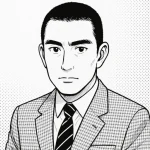“An artist is not only involved in creation; they are also involved in destruction.”

- January 14, 1925 – November 25, 1970
- Born in Japan
- Novelist, playwright, critic, political activist
Japanese
「芸術家は創造にだけ携わるのではない。破壊にも携わるのだ」
English
“An artist is not only involved in creation; they are also involved in destruction.”
Explanation
In this quote, Mishima suggests that the role of the artist extends beyond creation and innovation to also encompass destruction. The artist is not merely someone who builds, shapes, and adds to the world with their creations, but also someone who has the power to tear down, deconstruct, and challenge the existing structures, norms, and ideologies. This destructive aspect of artistry is seen as essential, as it allows the artist to question and redefine the boundaries of art, culture, and society. For Mishima, destruction is not about chaos or nihilism; rather, it is a necessary counterpart to creation, a process that allows the artist to purge outdated or limiting ideas and give birth to new visions and understandings. The tension between creation and destruction reflects the artist’s role in both building and challenging the world around them.
Mishima’s exploration of the destructive power of art aligns with his broader philosophy of beauty, transformation, and the conflict between tradition and modernity. Throughout his works, Mishima examined how art could serve as a force for both construction and deconstruction—a means of embracing the past while simultaneously breaking free from it. By acknowledging that artists engage in both creation and destruction, he emphasizes the dynamic tension inherent in artistic expression. This view suggests that the artist’s work is incomplete without the ability to question and destroy existing forms and ideals, much like how change often involves the destruction of the old in order to make way for the new.
In a modern context, Mishima’s quote speaks to the role of the artist as a challenger and transformer in society today. Artists are still seen as individuals who not only create new ideas and express innovative visions but also as figures who critique and disrupt established norms, social structures, and conventions. Whether through visual art, literature, music, or other mediums, modern artists continue to challenge the status quo, using their work to push boundaries, question traditions, and sometimes even destroy established norms in pursuit of new truths. Mishima’s words remind us that artistic freedom often involves both building and tearing down in the pursuit of authentic expression and cultural evolution.
Would you like to share your impressions or related stories about this quote in the comments section?
